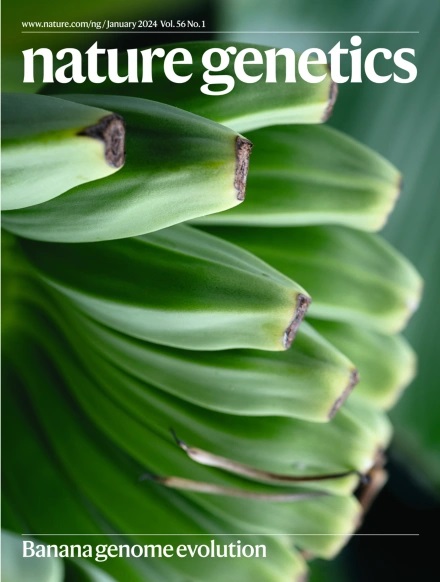Rare variants with large effects provide functional insights into the pathology of migraine subtypes, with and without aura
IF 31.7
1区 生物学
Q1 GENETICS & HEREDITY
引用次数: 0
Abstract
Migraine is a complex neurovascular disease with a range of severity and symptoms, yet mostly studied as one phenotype in genome-wide association studies (GWAS). Here we combine large GWAS datasets from six European populations to study the main migraine subtypes, migraine with aura (MA) and migraine without aura (MO). We identified four new MA-associated variants (in PRRT2, PALMD, ABO and LRRK2) and classified 13 MO-associated variants. Rare variants with large effects highlight three genes. A rare frameshift variant in brain-expressed PRRT2 confers large risk of MA and epilepsy, but not MO. A burden test of rare loss-of-function variants in SCN11A, encoding a neuron-expressed sodium channel with a key role in pain sensation, shows strong protection against migraine. Finally, a rare variant with cis-regulatory effects on KCNK5 confers large protection against migraine and brain aneurysms. Our findings offer new insights with therapeutic potential into the complex biology of migraine and its subtypes. Genome-wide association analyses of migraine and its subtypes identify new susceptibility loci, including rare variants with large effects implicating PRRT2, SCN11A and KCNK5.

具有巨大影响的罕见变体为有先兆和无先兆的偏头痛亚型的病理学提供了功能性见解。
偏头痛是一种复杂的神经血管疾病,有一系列严重程度和症状,但在全基因组关联研究(GWAS)中大多作为一种表型进行研究。在这里,我们结合了来自六个欧洲人群的大型GWAS数据集,研究了主要的偏头痛亚型,即先兆偏头痛(MA)和无先兆偏头痛(MO)。我们鉴定了四种新的MA相关变体(PRRT2、PALMD、ABO和LRRK2),并对13种MO相关变体进行了分类。具有巨大影响的罕见变体突出了三个基因。大脑中一种罕见的表达PRRT2的移码变体会导致MA和癫痫的大风险,但不会导致MO。对SCN11A中罕见的功能丧失变体的负荷测试显示,SCN11A编码一种在痛觉中起关键作用的神经元表达钠通道,对偏头痛有很强的保护作用。最后,一种罕见的对KCNK5具有顺式调节作用的变体对偏头痛和脑动脉瘤具有很大的保护作用。我们的发现为偏头痛及其亚型的复杂生物学提供了具有治疗潜力的新见解。
本文章由计算机程序翻译,如有差异,请以英文原文为准。
求助全文
约1分钟内获得全文
求助全文
来源期刊

Nature genetics
生物-遗传学
CiteScore
43.00
自引率
2.60%
发文量
241
审稿时长
3 months
期刊介绍:
Nature Genetics publishes the very highest quality research in genetics. It encompasses genetic and functional genomic studies on human and plant traits and on other model organisms. Current emphasis is on the genetic basis for common and complex diseases and on the functional mechanism, architecture and evolution of gene networks, studied by experimental perturbation.
Integrative genetic topics comprise, but are not limited to:
-Genes in the pathology of human disease
-Molecular analysis of simple and complex genetic traits
-Cancer genetics
-Agricultural genomics
-Developmental genetics
-Regulatory variation in gene expression
-Strategies and technologies for extracting function from genomic data
-Pharmacological genomics
-Genome evolution
 求助内容:
求助内容: 应助结果提醒方式:
应助结果提醒方式:


